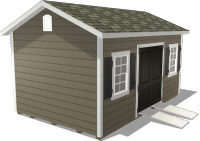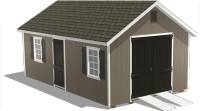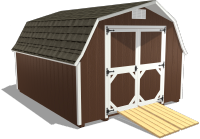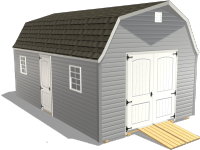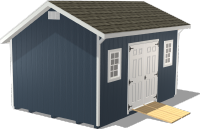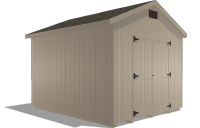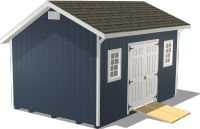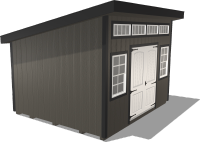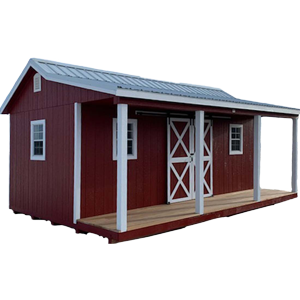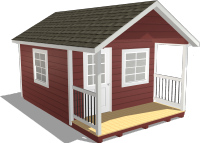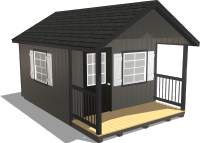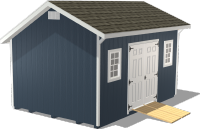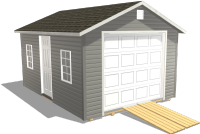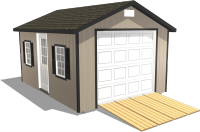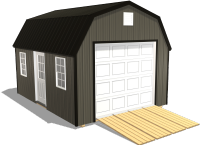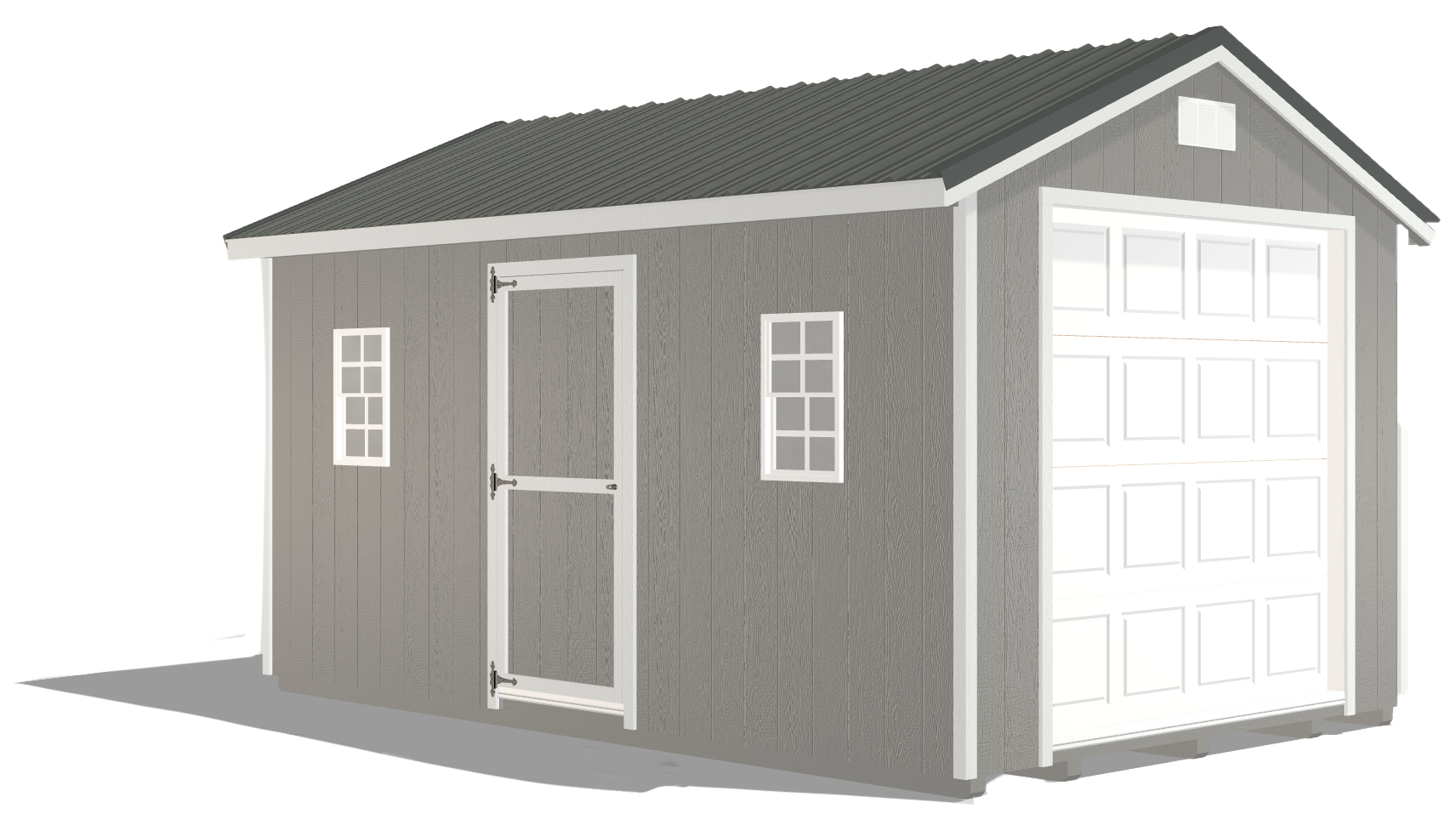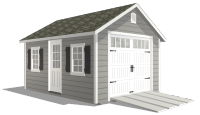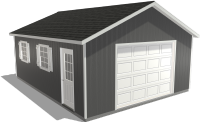Green Spaces: Eco-Friendly Tips for Sustainable Storage Sheds
by Dakota Storage Buildings, on August 21, 2024

The increasing demand for sustainable storage sheds is driven by the environmental impact of traditional building practices. Conventional storage sheds often use non-renewable materials and energy-intensive methods. This contributes to resource depletion, pollution, and higher carbon footprints. However, by adopting eco-friendly tips for sustainable storage sheds, we can reduce these negative impacts and promote a healthier, more sustainable environment. Using recycled or renewable materials, energy-efficient designs, and durable construction practices conserves resources, reduces waste, lowers operational costs, and improves environmental health. Ultimately, sustainable sheds can contribute to a healthier planet and provide long-term economic benefits.
Choosing Sustainable Building Materials for Your Storage Shed
Selecting sustainable building materials is the foundation of eco-friendly storage shed construction. Opting for materials that minimize environmental impact while maintaining quality and durability is crucial.
Recycled Materials
Using recycled materials in shed construction offers numerous benefits. Recycled wood, metal, and plastic reduce the demand for new resources and decrease waste in landfills. High-quality recycled materials, such as reclaimed wood beams and recycled steel, provide robust and reliable options for building durable sheds.

Additionally, recycled materials can be utilized to create sustainable storage bins and environmentally friendly storage containers within your shed. These containers help organize your space efficiently while reducing the need for new plastic production and promoting sustainable living practices. By choosing recycled options, you support initiatives aimed at reducing environmental impact.
Eco-Friendly Material Options
At Dakota Storage Buildings, we take pride in partnering with vendors who share our dedication to eco-friendly practices. One of our key partners, LP, exemplifies this commitment through their sustainable material options, like LP SmartSide. By choosing to work with LP, we ensure that our products not only meet the highest standards of quality and durability but also contribute positively to the environment.

LP SmartSide siding is a prime example of using sustainable building materials. Verified as carbon negative, these products store more carbon than the total greenhouse gas emissions released throughout their life cycle, significantly reducing the carbon footprint of our buildings. LP SmartSide products are sourced from forests managed under strict SFI® standards. The advanced durability of LP SmartSide ensures long-lasting performance with less frequent need for replacements, leading to less waste over time. Plus, LP ensures that 99% of the sourced wood is utilized, whether in the product itself or in sustainable manufacturing practices. By partnering with LP, we ensure that our customers receive top-quality, eco-friendly storage solutions.
Designing Energy-Efficient Storage Solutions
Energy-efficient designs play a vital role in creating sustainable storage sheds. By incorporating energy-saving features, you can reduce your shed's operational costs and environmental impact.
Insulation
Proper insulation is crucial for energy conservation in storage sheds. Eco-friendly insulation materials like recycled denim, sheep's wool, and cellulose made from recycled paper offer excellent thermal properties and reduce energy consumption. Effective insulation keeps the shed cool in summer and warm in winter, minimizing the need for additional heating or cooling. At Dakota Storage Buildings, we offer the option to insulate your shed. This helps ensure that your shed is energy-efficient and environmentally friendly.
Natural Lighting
Maximizing natural light in your shed reduces the need for artificial lighting, lowering energy usage. Incorporating windows and skylights in your shed design allows ample daylight to enter, creating a bright and inviting space. With Dakota Storage Buildings' 3D configurator, you can customize the placement of windows and skylights to optimize natural lighting.
Renewable Energy Sources

Integrating renewable energy sources like solar panels into your storage shed can significantly reduce your carbon footprint. Solar panels provide a sustainable energy source for lighting and other electrical needs. To optimize their efficiency, position the panels to maximize sun exposure. Typically, positioning the panels south will give them the most sunlight. Ensure proper wiring and install energy storage solutions to capture and utilize the generated power effectively. Although the initial investment in solar panels can be substantial, it often leads to long-term cost savings and a more sustainable energy solution for your shed. Plus, there are federal tax credits that could reduce the cost.
Ensuring Shed Longevity With Durable Construction
Constructing a durable shed with sustainable building materials ensures longevity and reduces the need for frequent repairs or replacements. By focusing on durability, you not only save on costs over time but also contribute to environmental sustainability by reducing waste and the need for new materials.
The Best Materials for Sustainable Sheds
Selecting sustainable building materials that enhance the shed's durability is essential. Materials like pressure-treated wood, metal alloys, and composite decking are designed to withstand various weather conditions.
Pressure-Treated Wood: This material is treated with chemicals that make it resistant to rot, pests, and fungal decay, ensuring a long-lasting structure even in damp environments.
Metal Alloys: Galvanized steel and aluminum, offer excellent resistance to rust and corrosion, making them ideal for sheds exposed to the elements.
Composite Decking: This is made from a blend of wood fibers and plastic. It provides a durable, low-maintenance option that resists warping, cracking, and insect damage.
Using materials with a proven track record of durability ensures that your shed can handle heavy snow loads, strong winds, and fluctuating temperatures without compromising its structural integrity. By investing in high-quality, durable materials, you create a shed that will stand the test of time, providing reliable storage and protection for your belongings.
Eco-Friendly Maintenance for Long-Lasting Sheds
Eco-friendly maintenance practices extend the lifespan of your shed while minimizing environmental impact. Regular cleaning with biodegradable products helps maintain the shed's appearance and prevents the buildup of dirt and grime that can cause deterioration. Using biodegradable cleaners ensures that harmful chemicals do not leach into the surrounding soil or water, protecting your backyard. Timely repairs are crucial to addressing minor issues before they become major problems. Inspect your shed regularly for signs of wear and tear, such as cracks, loose fittings, or areas of rot. Addressing these issues promptly prevents further damage and extends the shed's life.
Applying protective coatings, like sealants or paint, can protect the shed's materials from moisture, UV rays, and other environmental factors. For example, applying a weather-resistant sealant to wooden surfaces prevents moisture penetration, reducing the risk of rot and extending the wood's lifespan. Using UV-resistant paint on metal surfaces helps prevent rust and corrosion, keeping the shed looking new for longer.
Minimize Your Shed's Environmental Impact
Implementing eco-friendly construction methods and materials helps minimize the environmental impact of your storage shed.
![]()
Ditch the Toxins
Many conventional shed construction materials contain harmful chemicals that can leach into the environment. At Dakota Storage Buildings, we are committed to eco-friendly materials, using LP SmartSide siding and Sherwin-Williams low-VOC paints. LP SmartSide is durable, carbon-negative, and sourced from sustainably managed forests, while Sherwin-Williams low-VOC paints reduce indoor air pollution, creating a healthier environment. By choosing these sustainable building materials, we ensure a safer space for you and support the market for green products.
![]()
Adopt Sustainable Construction Practices
Adopting green construction techniques in shed buildings can significantly reduce environmental impact and enhance efficiency. One such technique is using energy-efficient designs that incorporate proper insulation and ventilation to minimize energy consumption. Additionally, selecting sustainable building materials like reclaimed wood or bamboo reduces the demand for new resources.
Long-Term Savings With Sustainable Storage Sheds
Investing in sustainable storage sheds offers long-term financial benefits that can greatly outweigh the initial costs. While the upfront investment in eco-friendly materials and energy-efficient designs may be higher, the savings accrued over time make it a worthwhile investment. For instance, integrating energy-efficient designs and renewable energy sources, like solar panels, can significantly reduce utility bills. These systems harness natural energy, cutting down on electricity costs and contributing to a greener environment.

Choosing durable construction materials like pressure-treated wood, metal alloys, and composite decking ensures that your shed withstands harsh weather conditions and resists rot, pests, and corrosion. This durability translates into fewer repairs and replacements, saving you money in the long run. Eco-friendly maintenance practices, such as using biodegradable cleaning products and timely repairs with non-toxic sealants, further reduce the long-term costs associated with upkeep. Plus, using sustainable storage bins and environmentally friendly storage containers to organize your shed can save money by reducing the need for new plastic products.
Start Your Eco-Friendly Shed Journey Today
Choosing sustainable solutions for storage shed construction is a vital step toward conserving resources, reducing environmental impact, and saving costs in the long run. By selecting recycled, renewable, and reclaimed materials, incorporating energy-efficient designs, and adopting durable construction practices, you can create an eco-friendly storage shed that benefits both you and the planet. Start your journey towards sustainability by downloading the "Shed Buying Workbook" and take the first step in getting your shed today.



